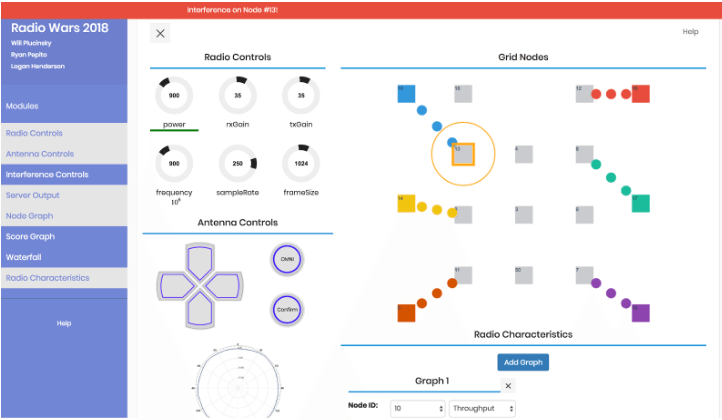Lab Radio Wars for Wireless Visualization and Education
We have leveraged our experimental capabilities with software defined radio and antennas to develop new laboratory coursework to teach concepts in wireless network security. This developed laboratory course introduces students to security vulnerabilities present in wireless networks. Topics covered begin with an introduction to wireless networks and the threat models observed due to the broadcast nature of the wireless medium. Current security issues in WiFi networks are then analyzed including link layer vulnerabilities, access point spoofing, eavesdropping, secrecy, confidentiality, and integrity of the data transmitted. WiFi security techniques such as Wired Equivalent Privacy (WEP) and WiFi Protected Access 2 (WPA2), as well as other wireless protocols including GSM and LTE are discussed. Additional topics covered include routing security, trust, user management, key management, and authentication servers. The course also goes into research-oriented wireless network security topics in PHY layer security (encryption and user authentication) and jamming. Lectures are integrated with hands-on laboratory experiments, where students gain experience in implementing security principles discussed during the lectures on the Drexel SDR Grid Testbed.
We are using the Drexel SDR Grid Testbed to emphasize the interdisciplinary nature of cybersecurity and information assurance. We are developing an academic year long competition available as a undergraduate senior capstone project sequence as well as to master of science students, around a “Radio Wars” competition in which teams leverage the various interdisciplinary degrees of freedom of a SDR (e.g., antennas, modulation, signal processing, networking, application-level software) to securely transmit information while preventing others from doing so.

We are developing a back-end database, user-interface, and programming API that allows students actions (e.g., changing transmit power, antenna direction, modulation and coding parameters, MAC design, routing algorithms) on the radios to be collected and logged.
We have also developed a visualization system that allows for these actions to be displayed in a way to provide an intuitive display of how these design decisions lead to different network performance.